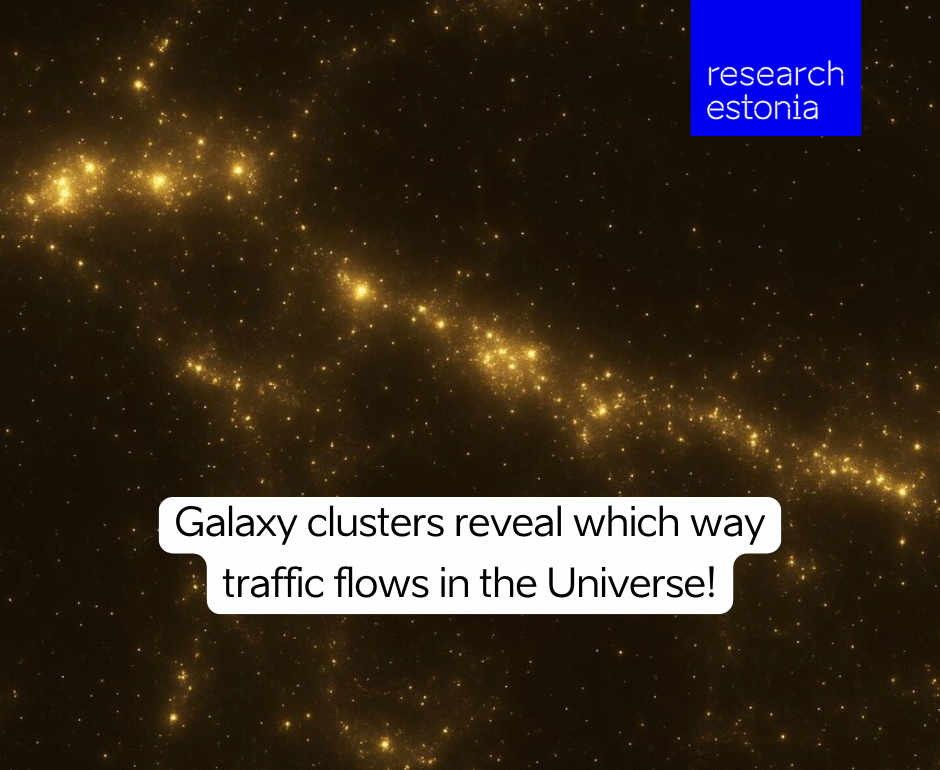A new study finds that galaxy clusters, cosmic cities packed with thousands of galaxies, trace invisible highways of dark matter stretching up to a billion light years across the universe. Even more remarkable, the clusters point the way to their neighbors.
In a groundbreaking study of 1.58 million galaxy clusters, an international team of astronomers led by Dr. Michael West of Lowell Observatory mapped how the universe’s largest structures are arranged. They found that most clusters are elongated, like grains of rice. But unlike rice scattered at random, these clusters tend to align with one another, their elongated shapes pointing toward their neighbors like arrows tracing hidden highways across the cosmos. The team’s findings were published in The Astrophysical Journal Letters.
“This gives us a rare glimpse into how the universe grew up,” said co-author Dr. Maret Einasto of Tartu Observatory in Estonia. “It shows that the foundation of the universe’s largest structures was laid early, and galaxies have been following those paths ever since.”
Astronomers have seen neighboring galaxy clusters align before, but never across such vast distances. This new study shows that clusters, like cities, are shaped by their surroundings. The biggest clusters develop where multiple dark matter highways intersect. Dark matter (the mysterious, invisible substance that makes up most of the universe’s mass) appears to determine cluster shapes and locations.
By examining the most distant clusters, the astronomers peered billions of years into the past and found that neighboring clusters were already aligned when the universe was still young, less than half its current age.
“It’s like discovering that New York, Madrid, Rome, and Beijing were all built facing the same direction, perfectly aligned despite being thousands of miles apart,” said lead author Dr. Michael J. West of Lowell Observatory.
To test their findings, the team turned to advanced computer simulations of the universe’s evolution. These simulations helped the scientists explore whether cluster alignments like those observed emerge naturally from known physics. They used the Last Journey simulation, developed by researchers at Argonne National Laboratory. This simulation tracks the motion of over a trillion particles as gravity shapes a virtual universe. The simulation revealed the same alignment patterns, supporting the idea that galaxy clusters form as matter flows along the universe’s dark matter highways.
“This is a cosmic traffic report,” said co-author Dr. Roberto De Propris of the Botswana International University of Science & Technology. “The cluster alignments show us which way galaxies have been flowing for billions of years.”
Other members of the team include Z.L. Wen and J.L. Han of the Chinese Academy of Sciences, whose comprehensive catalog of galaxy clusters made this research possible.
Adapted from Lowell Observatory´s press release.
This article was originally published on the page of Tartu Observatory, Univeristy of Tartu.
If exploring the cosmos has you starry-eyed, don’t drift back to Earth just yet! Chart a course to our next article where curiosity travels at the speed of light and read more about how Estonians will be frontrunners in protecting space. Virtually!
 Back
Back



